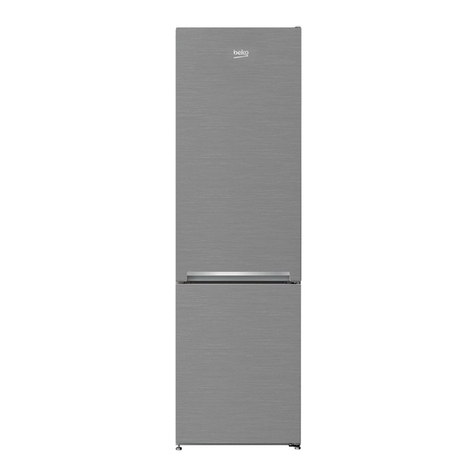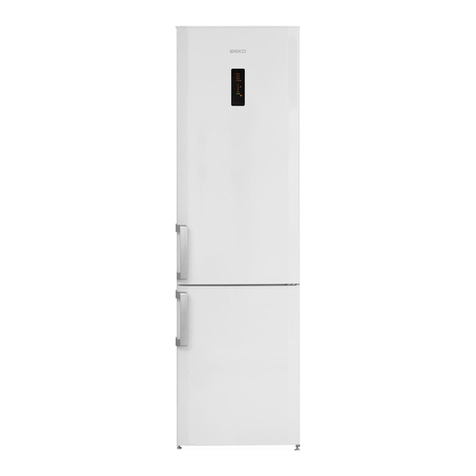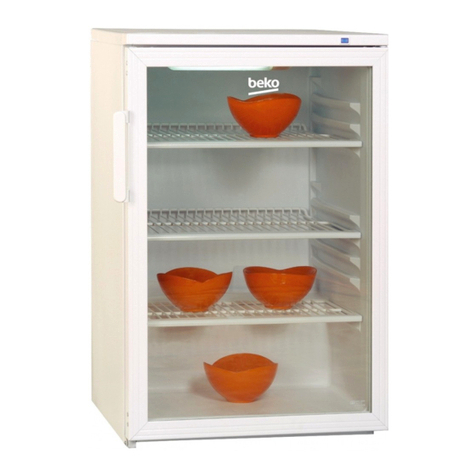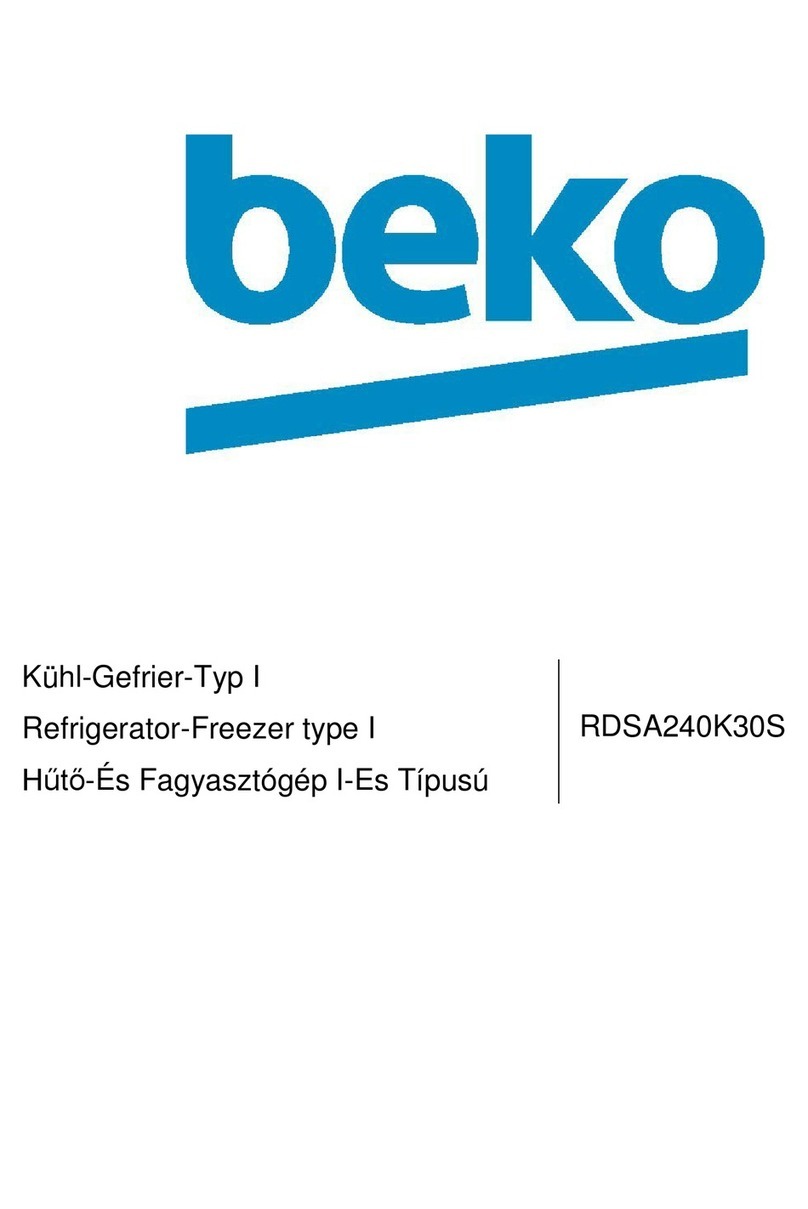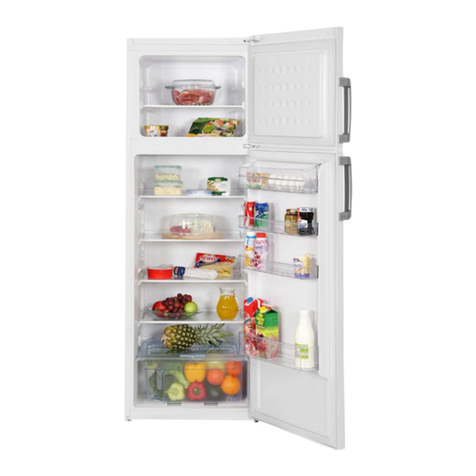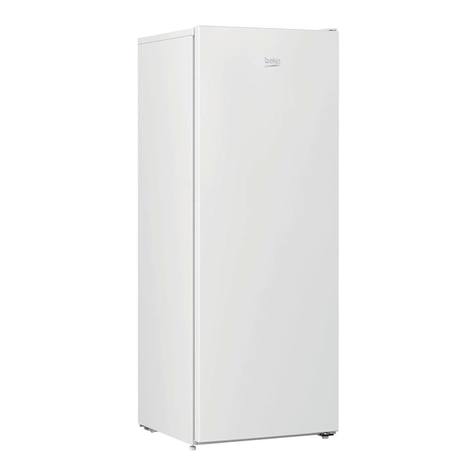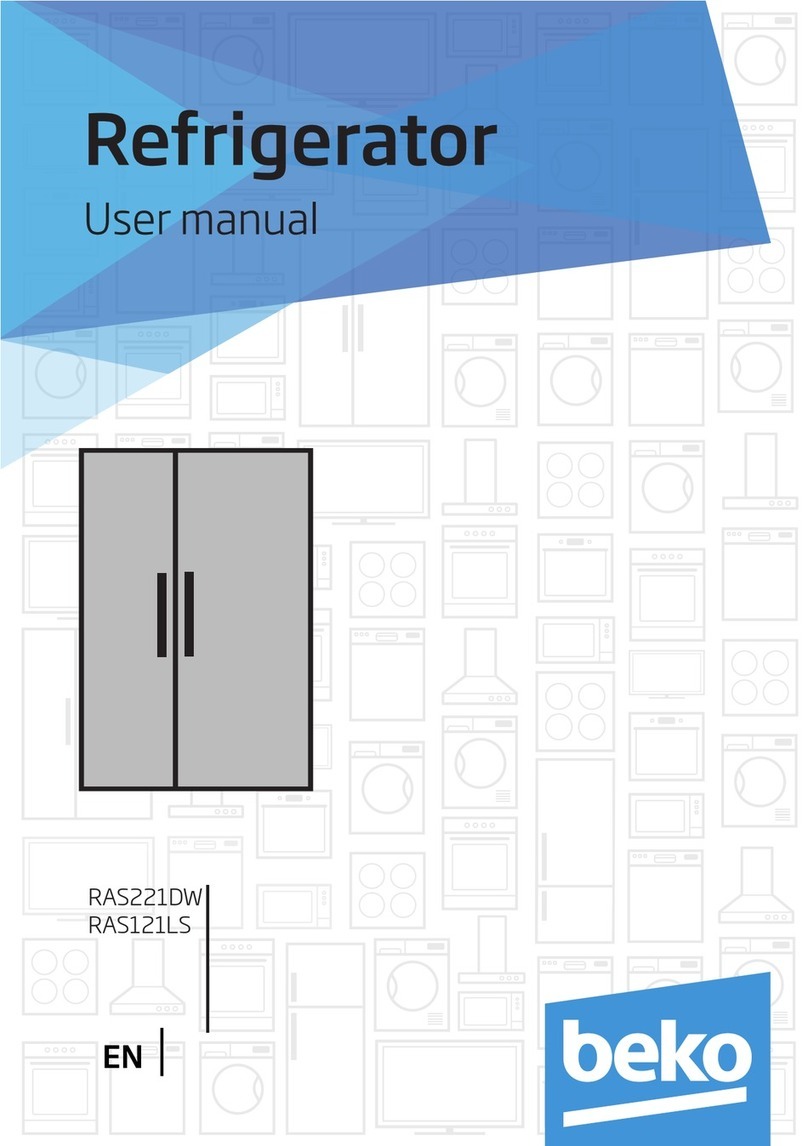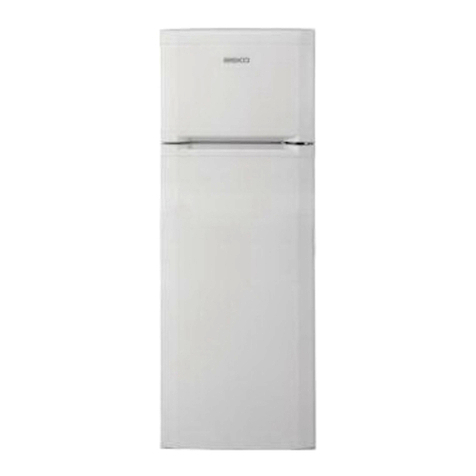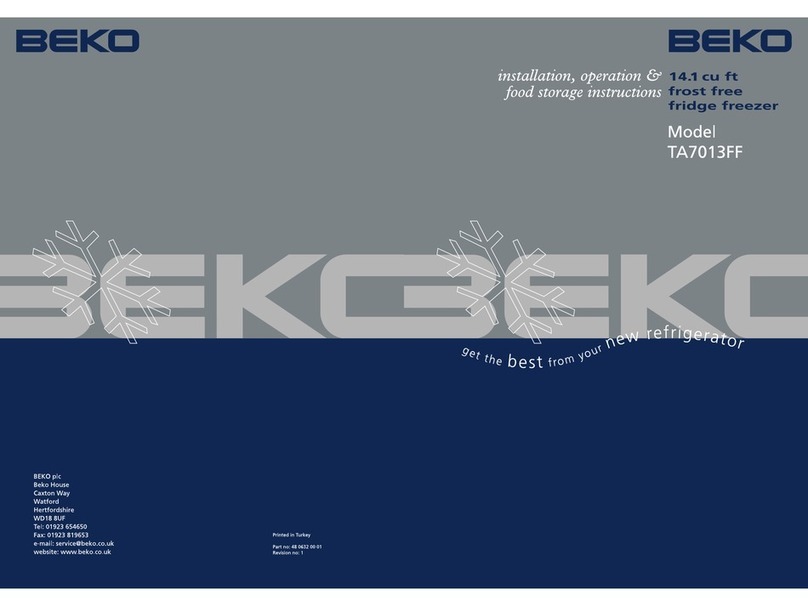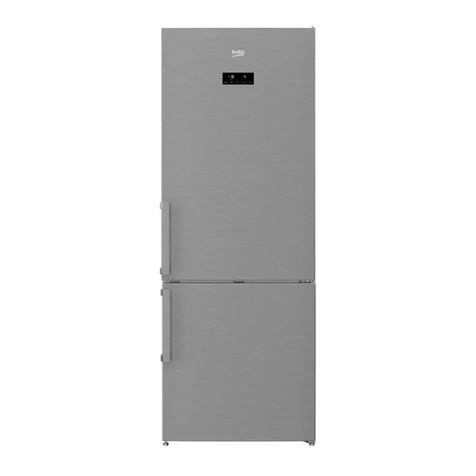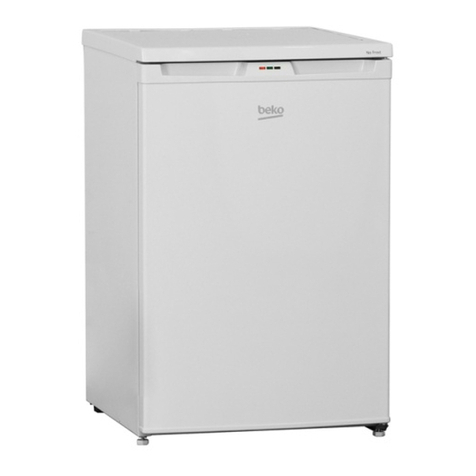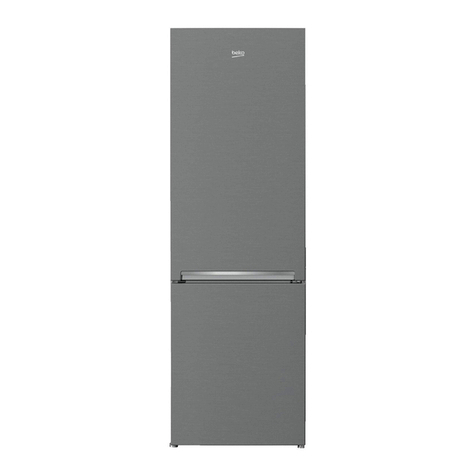
Getting to know your appliance
(Item 1)
1 - Setting knob and interior light
2 - Adjustable Cabinet shelves
3 - Water collector
4 - Crisper cover
5 - Crisper
6 - Compartment for quickly freezing
7 - Compartments for frozen foods keeping
8 - Adjustable foot
9 - Shelf for jars
10 - Shelf for bottles
11 - Freezer fan
The timer is a device for automatic defrost.
After a certain time him activate the heaters
who produce the defrost of your refrigerator.
The fan has the purpose to provide the
circulation of the air in compartment. It is
connected in parallel with the motor-
compressor. When the motor-compressor is
off, the fan will also be off.
Suggested arrangement of food in
the appliance
Guidelines for obtaining optimum storage and
hygiene:
1. The fridge compartment is for the short-
term storage of fresh food and drinks.
2. The freezer compartment is rated
and suitable for the freezing and storage of
pre-frozen food.
The recommendation for storage as
stated on the food packaging should be
observed at all times.
3. Dairy products should be stored in the
special compartment provided in the door
liner.
4. Cooked dishes should be stored in airtight
containers.
5. Fresh wrapped produce can be kept on
the shelf. Fresh fruit and vegetables should b
cleaned and stored in the crispers.
6. Bottles can be kept in the door section.
7. To store raw meat, wrap in polythene
bags and place on the lowest shelf. Do not
allow to come into contact with cooked food,
to avoid contamination. For safety, only store
raw meat for two to three days.
8. For maximum efficiency, the removable
shelves should not be covered with paper or
other materials to allow free circulation of cool
air.
9. Do not keep vegetable oil on door
shelves. Keep the food packed, wrapped or
covered. Allow hot food and beverages to cool
before refrigerating. Leftover canned food
should not be stored in the can.
10. Fizzy drinks should not be frozen and
products such as flavoured water ices should
not be consumed too cold.
11. Some fruit and vegetables suffer damage
if kept at temperatures near 0°C. Therefore
wrap pineapples, melons, cucumbers,
tomatoes and similar produce in polythene
bags.
12. High-proof alcohol must be stored upright
in tightly closed containers. Never store
products that contain an inflammable
propellant gas (e.g. cream dispensers, spray
cans, etc.) or explosive substances. These
are an explosion hazard.
Temperature control and adjustment
Operating temperatures are controlled by the
setting knob (Item 5) located on the ceiling of
fridge compartment. Settings may be made
from MIN, 1 ... MAX, MAX being the coldest
position.
When the appliance is switched on for the first
time, the setting knob should be adjusted so
that after 24 hours, the average fridge
temperature is no higher than +5°C (+41°F).
We recommend you set the knob on 2
position between the MIN and MAX setting
and monitor to obtain the desired temperature
i.
e. towards max you will obtain a colder fridge
temperature and vice versa. Some sections of
the fridge may be cooler or warmer (such as
the salad crisper and the top part of the
cabinet) which is quite normal.
We recommend that you check the
temperature with an accurate thermometer to
ensure that the storage compartments are
kept to the desired temperature.
Remember you must take your reading very
quickly since the thermometer temperature
will rise very rapidly after you remove it from
the freezer. Please remember each time the
door is opened cold air escapes and the
internal temperature rises. Therefore never
leave the door open and ensure it is closed
immediately after food is put in or removed.

